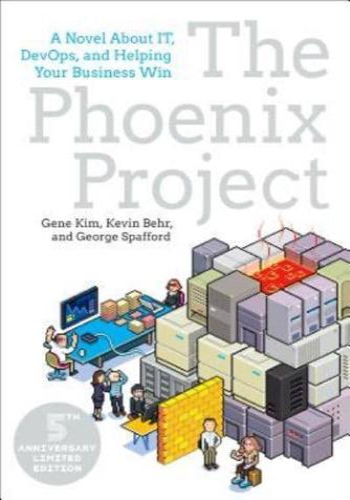Chapter 1: The Phoenix Project
This chapter introduces the main characters and the setting of the book: Parts Unlimited, a struggling manufacturing company on the brink of collapse. Bill Palmer, a reluctant IT manager, is tasked with leading the company's transformation through the "Phoenix Project," a risky initiative to overhaul their IT infrastructure and practices.
Example: Parts Unlimited's IT systems are outdated, slow, and unreliable, causing constant outages and delays in production. Bill realizes that the company's reliance on these systems has become a major bottleneck to their success.
Chapter 2: The Three Ways
This chapter presents the "Three Ways" to improve flow and reduce waste in software development and IT:
* The First Way (flow): Mapping the flow of work and identifying bottlenecks
* The Second Way (feedback): Establishing automated feedback loops to improve visibility and reduce defects
* The Third Way (learning): Promoting continuous learning and experimentation to improve processes
Example: Bill's team implements a "Kanban" system to visualize the flow of work in their IT department. This helps them identify bottlenecks and eliminate unnecessary delays.
Chapter 3: The DevOps Revolution
This chapter highlights the importance of collaboration between development and operations teams (DevOps). It introduces the principles of DevOps, including continuous integration, continuous delivery, and automated testing.
Example: Parts Unlimited's development and operations teams were previously working in silos, causing frequent conflicts and delays. By implementing DevOps practices, they are able to work more closely together and improve the reliability and speed of their software releases.
Chapter 4: The Goal
This chapter emphasizes the importance of defining a clear goal for the Phoenix Project. Bill and his team agree that their goal is to reduce the company's lead time from product idea to customer delivery by 50%.
Example: Parts Unlimited's current lead time is 6 months, which is too long to compete effectively in their industry. By reducing lead time, they aim to improve customer satisfaction and increase revenue.
Chapter 5: The Phoenix Project
This chapter discusses the implementation of the Phoenix Project. Bill's team establishes a "war room" to track progress and communicate with stakeholders. They also form a "root cause analysis" team to investigate and resolve problems systematically.
Example: The war room becomes a central hub for the Phoenix Project team, where they can track key metrics, identify risks, and coordinate their efforts.
Chapter 6: The First Law of Chaos
This chapter introduces the concept of "Chaos Theory" and how it applies to IT systems. It emphasizes the importance of understanding the unpredictable nature of complex systems and adapting to changing conditions.
Example: Bill's team encounters unexpected challenges and setbacks during the Phoenix Project. They learn to embrace chaos and adapt their plans accordingly, focusing on continuous improvement rather than perfection.






